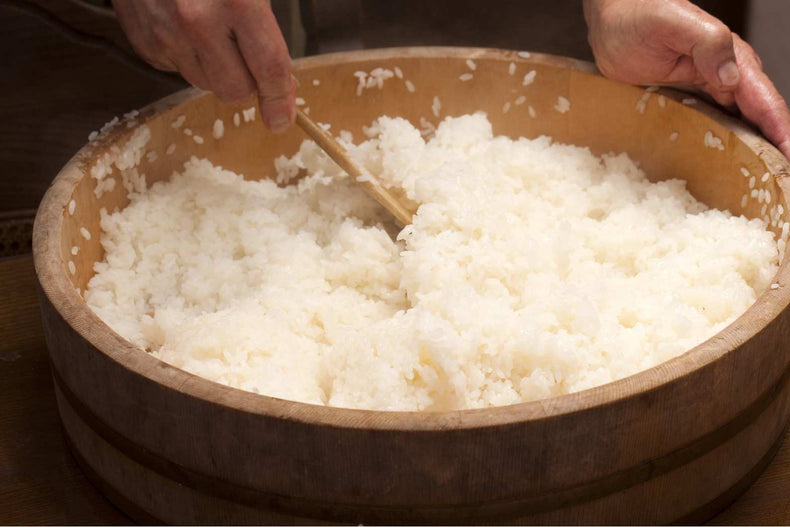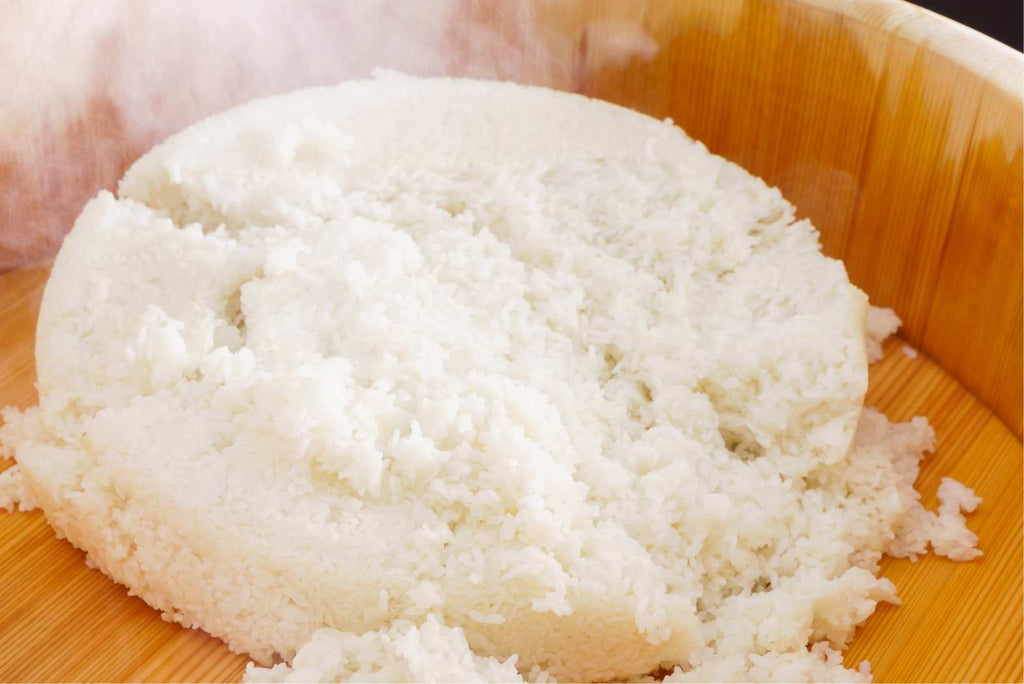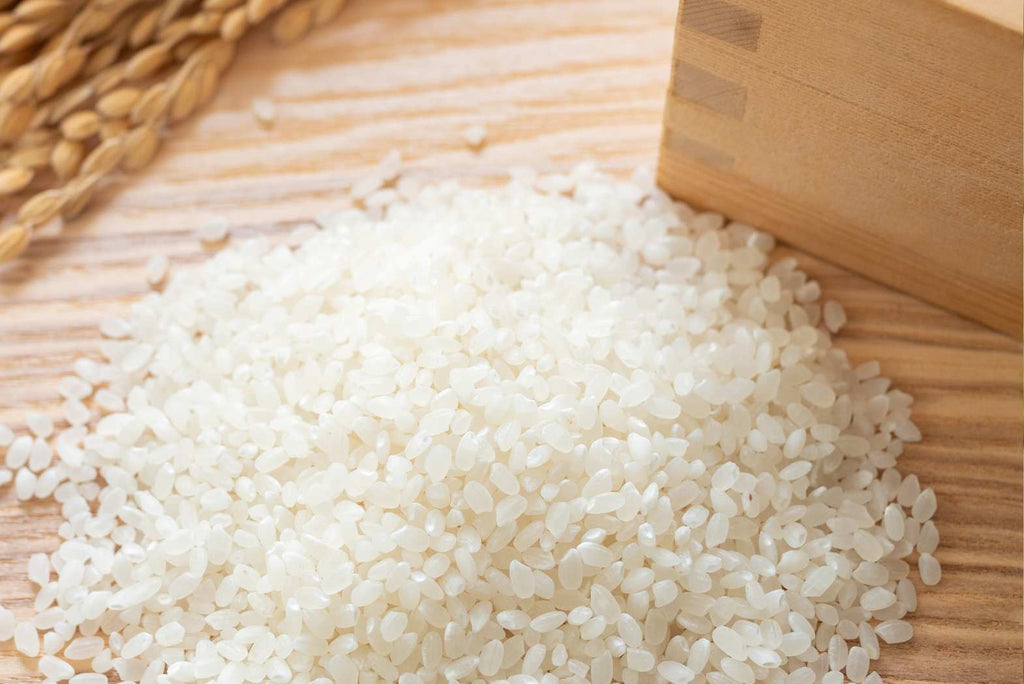Japan Rice: A Comprehensive Guide
by Jannika Resido

From its cultivation techniques to its culinary importance, Japan's rice has shaped the country's traditions and daily life in profound ways.
In this guide, we will look at the huge and varied world of Japanese rice, exploring its historical significance, agricultural practices, culinary uses, and cultural impact.
Introduction to Japan's Rice Culture
The Importance of Japan's Rice
Rice is not just a food in Japan; it's a cornerstone of Japanese identity. Historically, Japanese rice cultivation has been more than an agricultural activity; it's been central to the economy, society, and even religion. In many ways, rice has been a measure of wealth and a medium of exchange.
The significance of rice can be seen in rituals and festivals, such as the Niinamesai, where the Emperor himself offers newly harvested grains of rice to deities. Rice fields have shaped the very landscape of rural Japan, reflecting the harmony between human endeavour and nature. The phrase "a country built on rice" is no exaggeration.
It has fed not only the bodies but also the souls of the Japanese people, becoming deeply ingrained in their way of life and cultural consciousness.
Historical overview of rice in Japan
It's hard to pinpoint exactly when Japanese rice history begins. But there are some early records of rice farming in Japan from the late Jomon era (around 400 BC) in the southern island of Kyushu.
The crop quickly became integral to Japanese society, underpinning the development of sophisticated agricultural techniques.
Over centuries, as the society evolved from hunting and gathering, rice cultivation transformed Japan's landscape, carving out the terraced fields that are iconic today.
Japanese rice has also played a pivotal role in establishing social structures, with samurai and feudal lords measuring wealth by the koku, a unit signifying enough rice to feed one person for a year. Through the ages, rice has not only sustained life but also supported the rise and fall of social classes, fuelled the economy, and inspired countless cultural practices.
Understanding this historical context is essential to appreciating the profound impact that Japanese rice has had on the nation's history.
The Rice Planting Process in Japan
Traditional rice planting techniques
In Japan, traditional rice planting techniques are a testament to the nation's deep respect for nature. The process starts with selecting the best seeds, which are then sown in nurseries before being transplanted to paddy fields.
This transplantation is often done by hand, a labor-intensive method that has been passed down through generations. The paddies are meticulously maintained, with water levels carefully managed to provide rice grains with ideal growing conditions.
The use of koi carp to control pests and weeds in the fields is a prime example of the harmonious relationship between Japanese agriculture and the surrounding ecosystem.
These traditional methods, while time-consuming, are cherished for their sustainability and their role in fostering a close-knit community, as rice planting often involves the collective effort of local villagers. This communal aspect reinforces the cultural significance of rice in Japan.
Modern advances in Japanese rice cultivation
While traditional methods hold cultural importance, modern advances have significantly changed Japanese rice cultivation. The introduction of machinery like transplanters and combine harvesters has increased efficiency, allowing for faster planting and harvesting with less manual labour.
Meanwhile research has led to the development of new Japanese rice varieties that are more resistant to diseases and pests, as well as adaptable to varying climatic conditions.
Technology also plays a pivotal role in precision agriculture, where GPS and data analytics are used to optimise water usage and fertiliser application.
These innovations ensure a consistent and high-quality yield while minimising the environmental impact. Often, modern techniques complement the age-old practices, showing a commitment to preserving tradition while embracing the benefits of progress. This balance is crucial as Japanese rice continues to meet the demands of a changing world.
Varieties of Japanese Rice
The characteristics of Japan's rice varieties
Japan is home to an array of rice varieties, each with unique characteristics that cater to different tastes and culinary applications. The most well-known variety is perhaps Koshihikari, renowned for its perfect balance of stickiness and a delicate sweetness that has made it a staple across the country.
Another popular variety, Akitakomachi, or white rice offers a slightly firmer texture, ideal for sushi and onigiri. Meanwhile, the heirloom variety, Sasanishiki, is celebrated for its flavour and shiny appearance when cooked, making it a choice ingredient for high-end Japanese cuisine.
These varieties, among others, are the result of Japan's diverse climates and regional specialisation, where each prefecture prides itself on its unique strain of rice.
Understanding these differences is key to appreciating the subtleties of flavour and texture that Japanese rice brings to the table.

Popular varieties of rice in Japan
Among the numerous rice varieties cultivated in Japan, certain types have gained widespread popularity for their distinct qualities.
-
Shinmai, or new rice, is eagerly anticipated each year for its freshness and enhanced sweetness.
-
Uonuma Koshihikari from Niigata Prefecture is highly prized and often considered the epitome of premium short-grain Japanese rice, sought after for its superior taste and texture.
-
Yumepirika from Hokkaido, with its glossy appearance and exceptional stickiness, is another favourite, particularly for its performance in cold climates.
These popular varieties are not just food; they are cultural icons representing the regions they come from. Each variety captures something of the local climate, water quality, and farming traditions, providing a taste of Japan's agricultural diversity and regional pride with every bite.
The Role of Rice in Japan's Cuisine
Rice in daily meals
It's clear that Japanese rice is not merely a side dish; it is the centrepiece of the daily diet. Many people eat rice every day. It is often served as gohan, a steamed cooked rice that accompanies almost every meal, providing the foundation upon which other dishes are enjoyed.
The importance of cooking rice is such that the term for cooked rice, gohan, also means "meal" in Japanese, signifying rice's integral role in dining.
Breakfast often includes a bowl of rice alongside miso soup and pickles, while lunch may feature cooked rice balls (onigiri) or bento boxes with Japanese rice and various accompaniments.
Dinner is no different, with rice again taking a central place at the table. The versatility of rice is also evident in dishes like sushi and donburi, where it perfectly complements other ingredients like fish, vegetables, and egg.
How to prepare rice in Japan
In Japan, traditionally, rice washing involved rubbing grains between palms under water. This is to remove the 'hada nuka' - the residual bran skin. Rinsing rice like this makes for whiter, glossier rice.
Rice in Traditional Japanese Dishes
Rice is at the heart of traditional Japanese dishes, where its subtle flavours and textures are essential. Sushi, arguably Japan's most famous culinary export, relies on sushi rice seasoned with vinegar, sugar, and salt to complement the freshness of the fish.
In dishes like chirashizushi, rice acts as a canvas for a colourful array of toppings. Similarly, in comfort foods like ochazuke, where green tea is poured over rice, the grain's absorbency and flavour profile are crucial.
Rice's versatility is also showcased in mochi, a sweet sticky rice cake that is a staple during New Year celebrations, and in sake, where rice is fermented to produce Japan's renowned alcoholic beverage.
These dishes are not just meals but are part of rituals and festivities, highlighting how rice is woven into the very fabric of Japan's cultural heritage.

The Future of Rice in Japan
Challenges and solutions for rice farming
Japan's rice farmers face several challenges, including an aging workforce, shrinking rural populations, and climate change.
The average age of rice farmers in Japan is rising, with fewer young people choosing to stay in rural areas or take up farming. This demographic shift threatens the transfer of traditional rice farming knowledge to the next generation. Furthermore, climate change poses unpredictable weather patterns, affecting crop yields and quality.
To address these issues, Japan brown rice now is turning to technology and policy reforms. The government is promoting initiatives to attract and support young farmers, including subsidies and training programs.
Technological advancements such as automated machinery and AI for monitoring crop health are being adopted to improve efficiency and reduce the need for manual labour.
Additionally, research into more resilient rice strains is underway to ensure sustainability in the face of environmental changes. These solutions aim to safeguard the future of Japan's rice industry and its cultural legacy.
Rice Innovation and Sustainability in Japan
Innovation in rice cultivation is vital for the sustainability of Japan's rice industry. Researchers are developing recipes for new rice varieties that can thrive despite the challenges posed by climate change, such as droughts and floods.
These efforts include creating strains that grow with less water and are more resistant to pests and diseases, reducing the need for chemical inputs.
Sustainability initiatives also extend to the methods of farming, with a growing movement towards organic rice production and the use of natural farming techniques that do not rely on synthetic fertilizers or pesticides.
These practices not only help maintain the health of the soil and ecosystems but also appeal to consumers who are increasingly health-conscious and environmentally aware.
The combination of technological innovation and a return to more natural farming methods positions Japan to continue its tradition of rice cultivation well into the future, ensuring that this staple remains a sustainable and cherished part of Japanese culture.
What is sushi rice?
Sushi rice is a short-grain white japonica rice known for its higher starch content, providing the stickiness essential for sushi. This starchiness also lends a sweeter flavor compared to other rice varieties like Thai or Indian long-grain rice.
Brown Sushi Rice Brown sushi rice, less sticky than its white counterpart, is ideal for sushi styles like temaki and onigiri balls, held together by soy paper or nori.
Sushi Rice vs. Sticky Rice
Sticky rice, also known as 'glutinous' rice, differs from sushi rice as it contains higher levels of starchy amylopectin, resulting in a gluey texture when cooked. However, seasoning short-grain rice with sugar and vinegar, known as 'sushi seasoning,' increases stickiness, transforming it into sushi rice.
Should you use a rice cooker to cook Japanese rice?
Read our extensive guide on how to use a rice cooker here
An electric rice cooker comprises a heating element, a spacious 'cooking rice bowl', and a thermostat, along with a measuring cup for dry rice. Inside the cooking rice bowl, you'll find handy capacity guidelines for achieving the perfect rice-to-water ratio. Additionally, a rice cooker typically include a rice paddle for serving. You don't need to use a rice cooker to eat rice. But it can help!

About the author
Jannika Resido is Sous Chef's online content specialist. She is an expert in southeast Asian food and ingredients! Jannika has several years of experience writing blogs and features for online publications. She loves savoury dishes, trying new ingredients (especially the fruity ones!) and discovering recipes from across the world.


